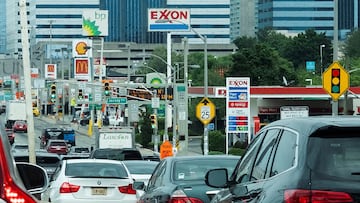This is the only country in the world that does not have traffic lights and this is the reason they don’t use them
Traffic lights were in use long before cars became commercially available but one country has no need for them - here’s why.

Cars are everywhere. According to the latest data from Which Car, there are currently over 1.5 billion cars in the world - one for every 5.5 humans. Most of them, around a third, are in the Asia-Pacific region.
The more cars there are, the greater need for public safety and traffic management systems. In fact, traffic lights were used long before cars were mass produced and commercially available. London was the first city to introduce a traffic light system - manually-operated gas lights colored green (‘go’) and red (‘stop’) were set up on Bridge Street, Great George Street, and Parliament Street in December 1868.
Within a few decades, electric traffic lights were introduced then the first automatic traffic light system - again in England, tried and tested then put into use in Wolverhampton in 1927.
Today, most (but not all) countries in the world have cars and practically all of them have computerized, coordinated traffic management systems.
Thimphu stands unique as the only capital city in the world without traffic lights, where a lone traffic officer gracefully directs the flow, embodying Bhutan’s charm and simplicity.❤️ pic.twitter.com/eAoxB60lJw
— Inside_bhutan_ (@inside_bhutan) December 30, 2024
Thimphu city, the world’s only capital with no traffic lights
The only country that doesn’t have traffic lights is the Kingdom of Bhutan, nestled in the Eastern Himalayas between China and India. The decision not to have a system of traffic lights was made by royal decree.
Bhutan has a population of 727,000 and a road network that spans approximately 8,000 kilometers. Until 1961, the only mode of transport was by mule or horse as most of the roads were unpaved.
While it’s not strictly true that Bhutan doesn’t have any traffic lights at all, there are none in the capital city, Thimphu. Traffic in the capital is directed manually by the Royal Bhutan Police from small gazebo-like booths in the middle of the road.
Related stories
Traffic lights were installed in 1995 but most drivers failed to follow to them properly so authorities reverted back to usual manual signalling directed by the police.
Complete your personal details to comment